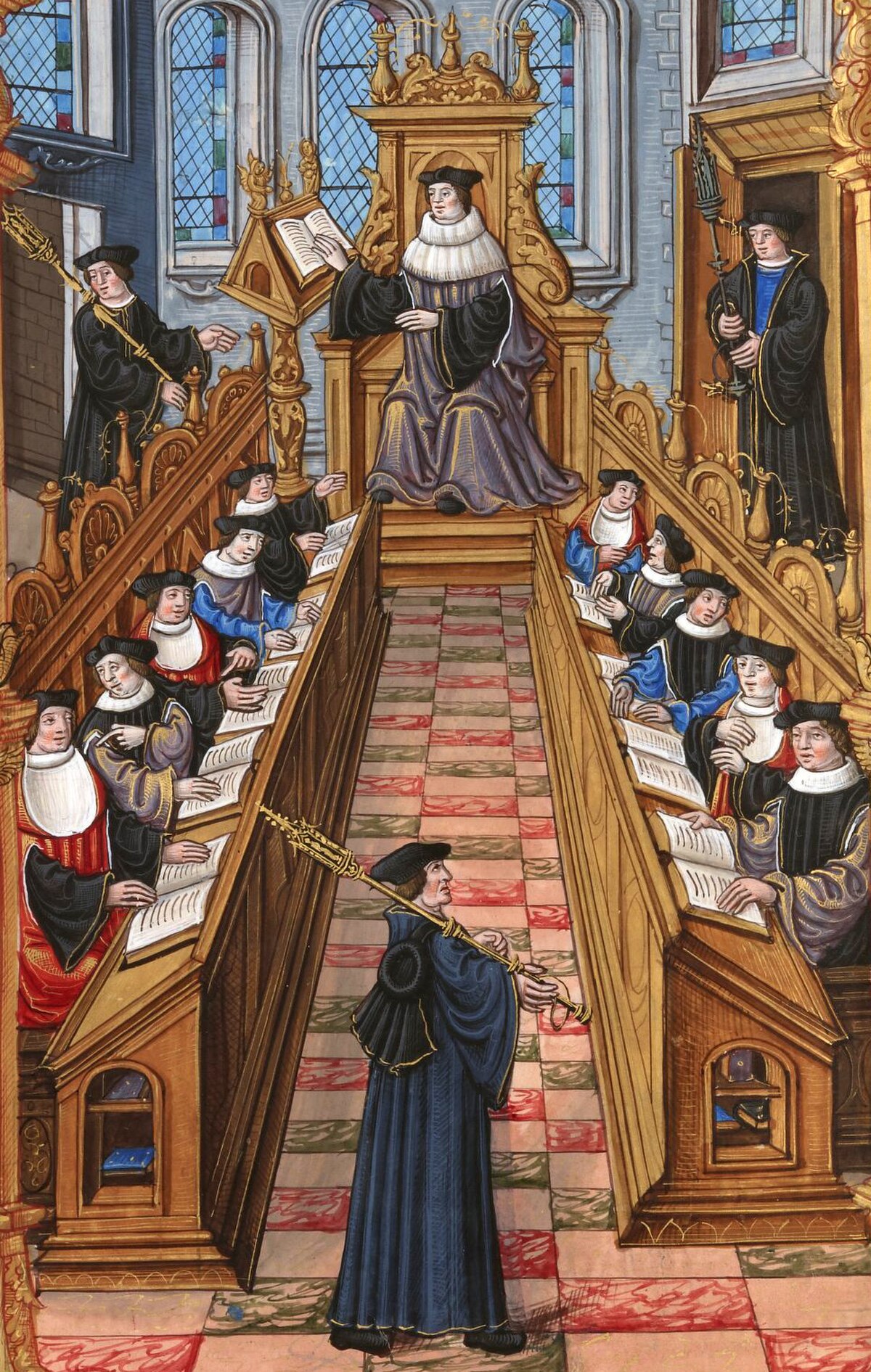
University of Paris
Sorbonne Université, Rue de l'In 1150, the future University of Paris was a student-teacher corporation operating as an annex of the Notre-Dame cathedral school. The earliest historical reference to it is found in Matthew Paris' reference to the studies of his own teacher (an abbot of St. Albans) and his acceptance into "the fellowship of the elect Masters" there in about 1170, and it is known that Lotario dei Conti di Segni, the future Pope Innocent III, completed his studies there in 1182 at the age of 21.
The corporation was formally recognised as an "Universitas" in an edict by King Philippe-Auguste in 1200: in it, among other accommodations granted to future students, he allowed the corporation to operate under ecclesiastic law which would be governed by the elders of the Notre-Dame Cathedral school, and assured all those completing courses there that they would be granted a diploma.
The university had four faculties: Arts, Medicine, Law, and Theology. The Faculty of Arts was the lowest in rank, but also the largest, as students had to graduate there in order to be admitted to one of the higher faculties. The students were divided into four nationes according to language or regional origin: France, Normandy, Picardy, and England. The last came to be known as the Alemannian (German) nation. Recruitment to each nation was wider than the names might imply: the English-German nation included students from Scandinavia and Eastern Europe.
The faculty and nation system of the University of Paris (along with that of the University of Bologna) became the model for all later medieval universities. Under the governance of the Church, students wore robes and shaved the tops of their heads in tonsure, to signify they were under the protection of the church. Students followed the rules and laws of the Church and were not subject to the king's laws or courts. This presented problems for the city of Paris, as students ran wild, and its official had to appeal to Church courts for justice. Students were often very young, entering the school at 13 or 14 years of age and staying for six to 12 years.
